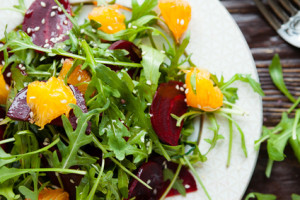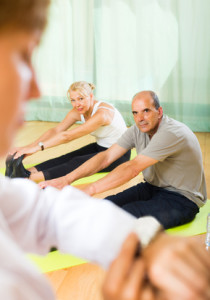I have mentioned many times thus far, not just that exercise is the managing partner of integrative oncology, but I try to be really careful to say the right exercise. As much as exercise does hold the key to our magic kingdom of health within, there are contraindications, both in terms of prevention and recovery, and prevention of recurrence.
 To understand this, let me give you a very brief intro to oxidative stress. We have all read about the importance of eating our fruits and vegetables to provide much needed antioxidants. This is because we live a life where oxidative stress is in abundance. As exercise is the one and only Rx with no bad side effects, the truth is, we should always say “the right exercise”.
To understand this, let me give you a very brief intro to oxidative stress. We have all read about the importance of eating our fruits and vegetables to provide much needed antioxidants. This is because we live a life where oxidative stress is in abundance. As exercise is the one and only Rx with no bad side effects, the truth is, we should always say “the right exercise”.
Unfortunately in our world of extremes and quick fixes, we think of exercise as bop till you drop. Pushing hard, sweating — and as some celebrity trainers like to take pride in — push till you
throw up.
OK… I will NEVER support the latter, under any circumstance, but for some people pushing to the point of sweaty, dirty, pumped, driven, is a great thing.
I do believe the fountain of youth is our own sweat! And yes, that level of intensity to achieve that state differs greatly amongst people.
The danger exists, when people exceed their optimal levels, which we can do unknowingly. Given the chronic illnesses, the data seems to support most people are not exerting themselves in terms of exercise or physical activity anywhere near that optimal level.
 However, with people recovering from cancer, it is very important to work at the right level, and know that slow and steady wins the race. And just to throw in another caveat – yes this level of intensity will vary drastically, depending on the type of cancer and treatments utilized.
However, with people recovering from cancer, it is very important to work at the right level, and know that slow and steady wins the race. And just to throw in another caveat – yes this level of intensity will vary drastically, depending on the type of cancer and treatments utilized.
Oxidative stress occurs when the production of reactive oxygen species (ROS), often referred to as “free radicals,” exceeds antioxidant defence. There are many perpetrators in our world to the production of reactive oxygen species: alcohol, sugar, toxins, certain chemicals… a very long list, and the truth is we have to add exercise to this list if we are doing it beyond the appropriate point. Or if exercise is counterproductive to…
The balance between the ROS and antioxidants is out of whack, upsetting our inner ecosystem, creating an environment for cancer to survive and thrive. As always, its all about balance.
And this is yet another reason it is critical to have a well balanced, nutrition packed diet. The expression often used is “eat a rainbow”, because eating an assortment of colors (fruits and vegetables, not candy) is a great way to ensure getting a variety of antioxidants our bodies need to combat those free radicals. And by the way, the danger of an imbalance in this equation is a factor in not just cancer but many other diseases, including heart disease, Alzheimer’s, depression, macular degeneration, autoimmune disorders. Now, let’s think about the many possible side effects of treatments (medications) for these diseases… cancer. OK, let’s eat our antioxidants! (I promise, much more about antioxidants in another article)
Or as my chick flick heart insists: Exercise & Nutrition are the greatest love affair of all times. One just cannot live without the other.
The point is NOT don’t exercise because it might be a source of oxidative stress. The point is we must expand our view of what exercise is. The point is to understand physical activity vs. exercise, dynamic vs. static exercise. Exercise is NOT about pushing in misery until you drop in a gym you don’t like! The point is there are many types of exercise that can be performed multiple times through out the day to tweak our immune & circular systems, and to accomplish that flow of Qi, that inner ecosystem.
The other point we have to remember, in all of our wonderful forms of exercise: training, cardio respiratory, strength, yoga, pilates, Qi Gong Tai chi, they all have wonderful benefits and healing powers. However, there are boundaries & contraindications for all of them. There are a number of parameters involved when deciding on an exercise program for cancer recovery & beyond. To name a very few: the type of cancer, treatment, potential for lymphedema, other pre-existing medical conditions, level of conditioning, goals of the program, fat loss suggested, preservation of muscle mass, side effects of treatment. And every one of these categories opens up many
other considerations.
 But the most important factor of all is the F factor, FUN. What will we actually, enjoy, embrace, do, and want more. We learn very quickly in the fitness business, “no time” is an excuse. When we know the literally infinite possibilities for physical activity, no time is an excuse, or, a very limited knowledge of what exercise is.
But the most important factor of all is the F factor, FUN. What will we actually, enjoy, embrace, do, and want more. We learn very quickly in the fitness business, “no time” is an excuse. When we know the literally infinite possibilities for physical activity, no time is an excuse, or, a very limited knowledge of what exercise is.
But step one is MOVE. Whether we move and pump those muscles when seated or standing, get it moving and pumping. Please consult a trained professional in cancer exercise training.
Even if the professional tells you they have worked with many cancer patients, it does not mean he or she has been trained in cancer exercise, and knows the many forms of exercise available, not just their own platform, and is aware there are contraindications, and potentially could have an adverse effect on recovery.
There is no one Rx for each cancer. We cannot say, “For breast cancer do this, for prostate cancer do that.”
Cancer exercise is both art and science, supports a mind body connection and creates an environment within to optimize treatment outcomes. Yes, always get permission from the health care professionals, but don’t let them think you are considering training for Ironman, This is not what cancer exercise is all about.
In exercise, we follow the FITT formula: Frequency Intensity Type Time
For cancer exercise I have modified this formula. FFITTT: FUN Frequency Intensity Type Time Telomeres…. leaves you hanging for another blog!
For a constant supply on recent studies on cancer prevention and recovery, please join me on Facebook.
Shira Litwack is the Director of International Relations and Master Trainer at, Cancer Exercise Training Institute and creator of Best in Health Radio.
